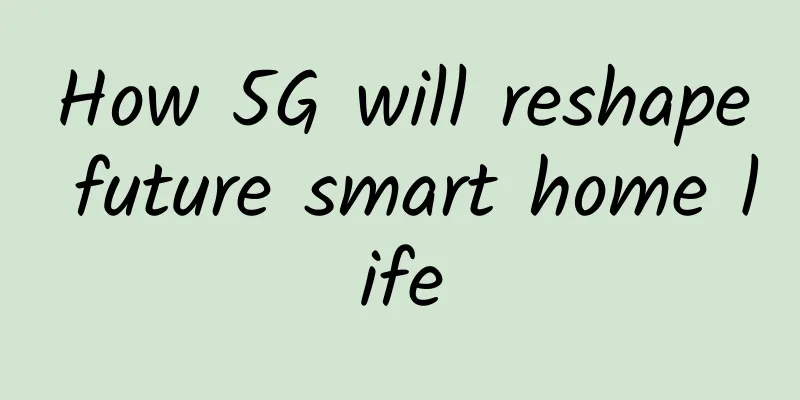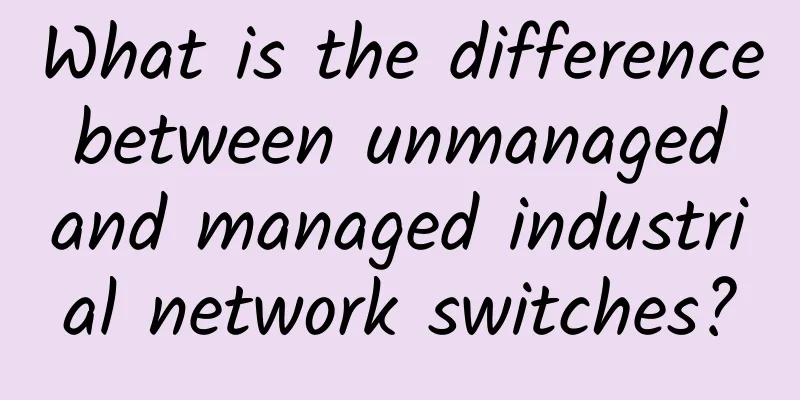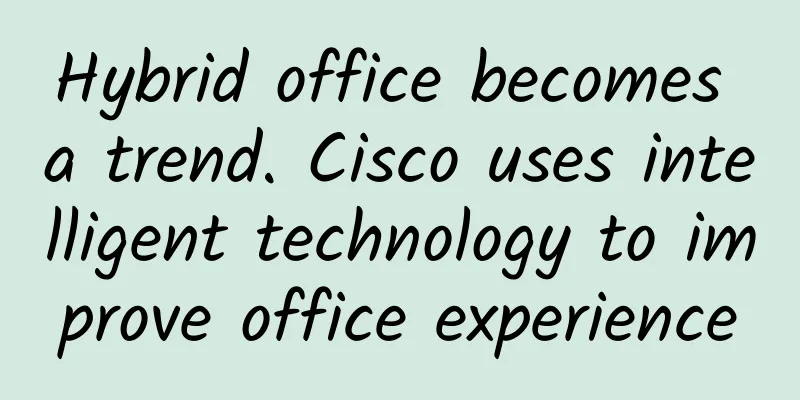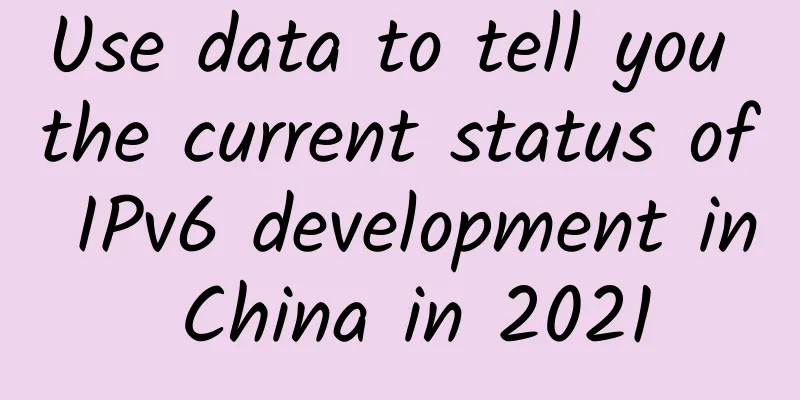How 5G will reshape future smart home life

|
Home is where the heart is. The old adage conveys a powerful truth that becomes increasingly relevant as today’s connected, or “smart,” homes transform into the homes of the future. As digital transformation continues, global smart home revenue will reach $183 billion in 2025 (Omdia Smart Home Devices and Services Forecast: 2020–2025). Now, there is a renewed focus on making technology easier to adopt and use in the home, which can expand the definition of the word home. Home is increasingly where we work, educate our children, entertain ourselves, and even see our doctors. And soon, the feeling of “feeling at home” will be everywhere. Today's connected homes are hampered by too many isolated point-to-point device solutions without overall coordination and a lack of real interoperability standards. Many companies or alliances sacrifice the end experience of consumers for their own interests, which seriously hinders the development of smart homes. Although these companies or alliances are working hard for users, they cannot avoid the temptation of money in the end. They are all doing their own thing and dreaming of unifying the world... 5G Future Home In the era of fifth-generation (5G) wireless networks and advanced technologies, feeling at home depends on the connectivity, information and quality of user experience provided by digital services in our surroundings, whether we are stationary or moving. If services like this become so seamless and ubiquitous, for example, that we can start watching a movie on a screen at home and then easily continue on the screen of a self-driving car we’ve boarded, we’ll likely feel more “at home” whether we’re between four walls or four wheels. Consumers can expand the traditional concept of home with the new concept of "home is everywhere". The central idea is that everything that means home to us, from our desired room temperature and air quality to our preferred entertainment and education devices, fitness and wellness equipment, security features and refrigerators, will soon be seamlessly connected to analog and smart technology via 5G, wherever we go: in driverless cars, at resorts, on leisure cruises… 5G has the potential to transform the world of ordinary objects into one of interconnected smart objects, such as the often-referred Internet of Everything. The benefits that 5G will bring to our future lives will be enormous. Mobile and digital technology has enabled us to stay connected across distances. It allows us to monitor the status, mood, and happiness of people far away, and we can work together and even participate in interpersonal relationships with people from almost anywhere around the world. Over the centuries, what we consider “home” has evolved into a hyperconnected lifestyle filled with highly personalized services powered by new technologies. The home of the future: a hub for hyperconnected living So what will make the ‘home of the future’ a reality? A growing number of enabling technologies reaching a certain quality level that will allow them to make homes smart, autonomous, able to understand, predict and make decisions or offer a range of options. The foundation of these new technologies is 5G: near real-time response (ultra-reliable low latency), blazingly fast speeds (enhanced mobile broadband), connecting virtually all devices (massive Internet of Things or IoT), and network slicing. While 5G will be the primary driver of future homes, artificial intelligence (AI), edge computing and advanced data analytics will also be critical. The combination of these new technologies will enable us to achieve a hyper-personalized user experience in the “home of the future.” Since the feeling of being “at home” is always relevant to us, these technologies will make the “home of the future” a central support hub for our digital lifestyles. In such “homes of the future”, we will schedule virtual doctor appointments, learn from holograms of teachers and students, and access services on devices other than smartphones, tablets, laptops and TVs. Advanced home technology will also think ahead for us, such as checking for unexpected roadworks to ensure you arrive on time. A few days in advance, a smart kitchen will think about your birthday party, ask invited friends about their dietary restrictions, and based on their RSVP, automatically store the right amount of personalised snacks based on preferences. Experience-rich home services: Still hampered by low-end technology The user experience in today’s connected home remains basic. Without sufficient high-quality and rich experience of consumer services, there will be no interest in more advanced home technologies, but without demand, it may be difficult to drive the development and innovation of smart home technologies and applications. Today's connected homes are hampered by too many isolated point-to-point device solutions without overall coordination and a lack of true interoperability standards. Many companies or alliances sacrifice the consumer's end experience for their own interests, which seriously hinders the development of smart homes. Although these alliances are working for the users in the name of the users, they ultimately cannot avoid the temptation of money and act independently. Although industry giants including Apple have begun to jointly plan to create an interconnected smart home standard, the progress is not very optimistic due to the interests of the members... In other words, smart devices are cumbersome to set up and don’t offer the seamless interconnectivity and interoperability that could truly help us. This disconnect is holding back demand. For the “home of the future” market to take off, more service quality and technical processes are needed. In addition to the problem of fragmentation, the arrival of the home of the future is also hampered by factors such as the high cost of connected devices and the lack of standards such as Wi-Fi, ZigBee, Z-Wave, Bluetooth, etc. in today’s homes. But 5G can change this, acting as a coordinator and enabler of a highly commercialized Future Home market, making them easy to adopt and forming usage habits. Essentially, the message to the industry and related businesses is this: while the connected home market doesn’t look very promising today, that’s about to change dramatically. With the right execution and partnerships, 5G can create a vast new world of opportunity in the home of the future, but there’s also a big chance that many will be left behind. |
<<: Network protocols TCP and UDP
>>: 2020 is already halfway through, how far is 5G from a full-scale outbreak?
Recommend
The Internet can also get stuck?! There are three magic weapons to solve it!
Highways will be congested, and the Internet, the...
Opening a new era of network, Cisco takes you to experience an unprecedented network
[51CTO.com original article] In what direction wi...
How much power does 5G base stations consume? It is expected to account for 2.1% of the total electricity consumption in society
As we all know, since the first half of the year,...
The cancellation of data roaming charges has become inevitable, but do operators still have to wait until they get punished?
There is a theme every year. Once one is solved, ...
The SD-WAN track has changed. When will the dragon trainer appear?
In an environment where cloud computing, mobile a...
SmartHost: AMD Ryzen series 35% off, starting at $2.57/month, Los Angeles/New Jersey/Las Vegas data centers
SmartHost has posted a message on its website say...
V5.NET launches new cloud servers with 20% discount starting from 20 yuan/month, with optional data centers in Hong Kong/Korea/Germany/Netherlands
V5 Server (V5.NET) previously mainly provided ind...
Why does TCP use the "three-way handshake" to establish a connection? An example will teach you
First of all, why is it a three-way handshake? Af...
PQHosting: 1Gbps unlimited traffic large hard disk VPS in the Netherlands starting at 3.77 euros per month
"PQ HOSTING PLUS" SRL is a foreign host...
What is Wi-Fi 7, which is more powerful than Wi-Fi 6?
As we all know, Wi-Fi 6 can be said to be one of ...
What exactly is Spine-Leaf?
[[401509]] Today's story begins 67 years ago....
One year after the license was issued, China's 5G commercialization yesterday, today and tomorrow
A lot can change in life in a year, and for the 5...
Why is WiFi on buses not as popular as on subways?
Public transport Wi-Fi operator 16Wi-Fi recently ...
UWB technology is so popular, but which application areas are most worthy of attention?
In the past one or two years, UWB technology has ...
New breakthrough! WiFi 7 is coming soon…
On February 15 , Qualcomm's official website ...









